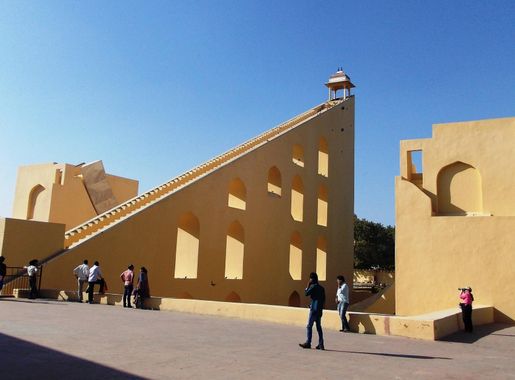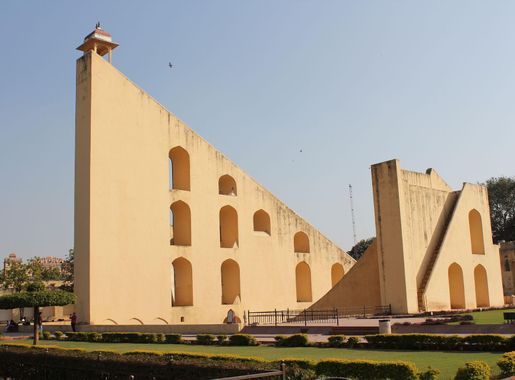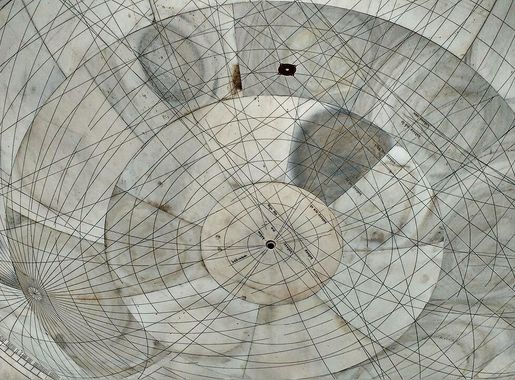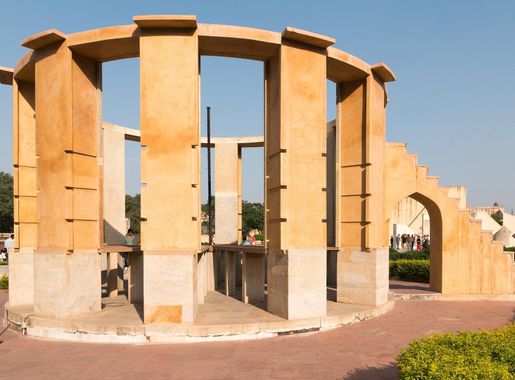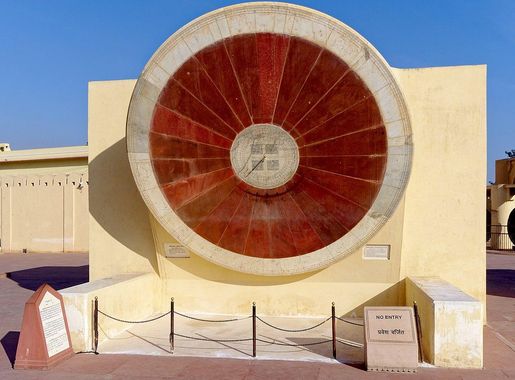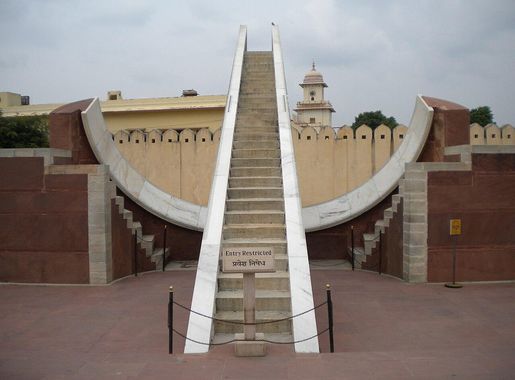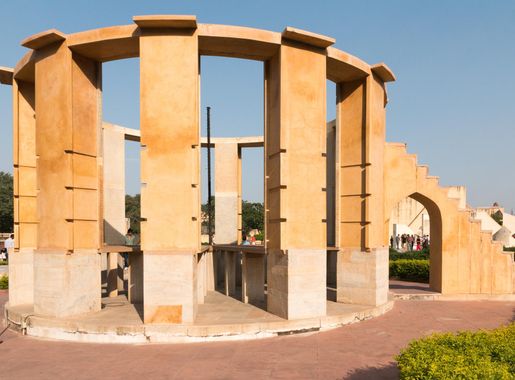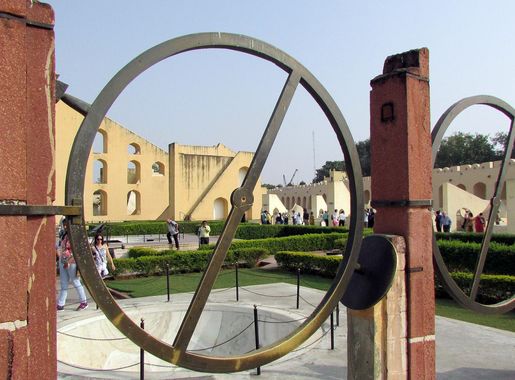
Jantar Mantar: The Celestial Marvel of Jaipur
Discover Jantar Mantar in Jaipur: a UNESCO World Heritage site showcasing 18th-century astronomical instruments, blending science and art in a mesmerizing experience.
Jantar Mantar in Jaipur is a UNESCO World Heritage site and a testament to India's rich historical and scientific heritage. Built in the early 18th century by Maharaja Sawai Jai Singh II, this astronomical observatory is a fascinating blend of art, science, and spirituality. It houses the world's largest stone sundial and a collection of 19 architectural astronomical instruments. The observatory was designed to measure time, predict eclipses, and track stars' locations. Each instrument has a specific purpose and intricate design, which reflects the scientific advancements of that era. The Samrat Yantra, for instance, is a massive sundial that can tell the local time with remarkable accuracy. Visitors to Jantar Mantar can explore these ancient instruments and understand how they were used. Guided tours are available and highly recommended to grasp the full extent of the scientific achievements. The site is not only educational but also visually stunning, making it a must-visit for anyone interested in history, science, or architecture.
Local tips in Jantar Mantar
- Visit early in the morning or late afternoon to avoid the harsh midday sun.
- Hire a local guide to get detailed insights into the significance and functioning of each instrument.
- Combine your visit with a trip to the nearby City Palace and Hawa Mahal for a full day of exploring Jaipur's heritage.
- Wear comfortable shoes as the site involves a fair amount of walking.
- Check the local weather forecast and carry water and sunscreen to stay hydrated and protected.
Jantar Mantar: The Celestial Marvel of Jaipur
Jantar Mantar in Jaipur is a UNESCO World Heritage site and a testament to India's rich historical and scientific heritage. Built in the early 18th century by Maharaja Sawai Jai Singh II, this astronomical observatory is a fascinating blend of art, science, and spirituality. It houses the world's largest stone sundial and a collection of 19 architectural astronomical instruments. The observatory was designed to measure time, predict eclipses, and track stars' locations. Each instrument has a specific purpose and intricate design, which reflects the scientific advancements of that era. The Samrat Yantra, for instance, is a massive sundial that can tell the local time with remarkable accuracy. Visitors to Jantar Mantar can explore these ancient instruments and understand how they were used. Guided tours are available and highly recommended to grasp the full extent of the scientific achievements. The site is not only educational but also visually stunning, making it a must-visit for anyone interested in history, science, or architecture.
Iconic landmarks you can’t miss
Jantar Mantar - Jaipur
Explore the celestial wonders of Jantar Mantar in Jaipur, a UNESCO World Heritage Site showcasing ancient astronomical instruments and architectural brilliance.
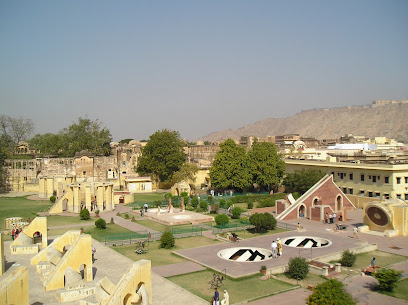
Laghu Samrat Yantra
Explore the ancient astronomical marvels at Laghu Samrat Yantra, an observatory in Jaipur showcasing India's rich scientific heritage.
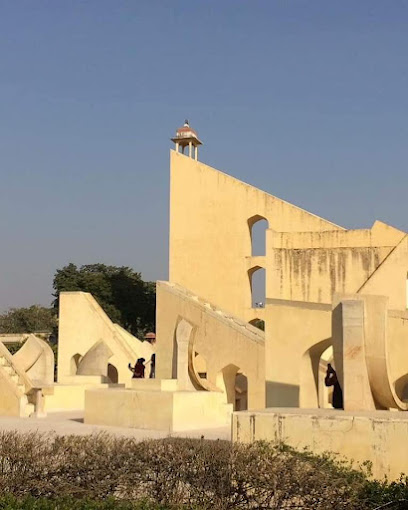
Chakra Yantra Jantarmantar
Discover the architectural brilliance and astronomical wonders of Chakra Yantra at Jantar Mantar in Jaipur, a must-visit historical landmark.
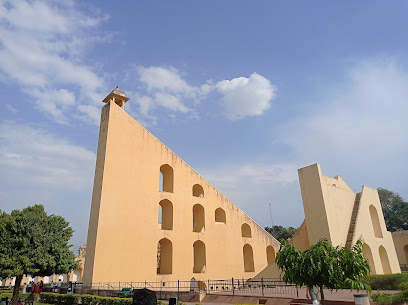
Vrihat Samrat Yantra
Discover the Vrihat Samrat Yantra in Jaipur, an architectural marvel that showcases India's astronomical prowess and offers a glimpse into ancient scientific practices.
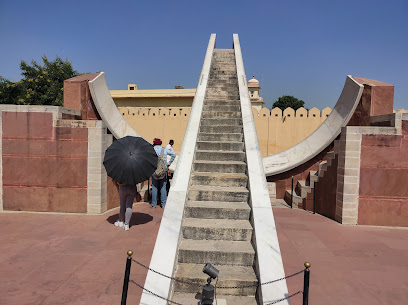
Ram Yantra
Explore Ram Yantra in Jaipur, an 18th-century astronomical observatory showcasing stunning architecture and the brilliance of ancient Indian science.
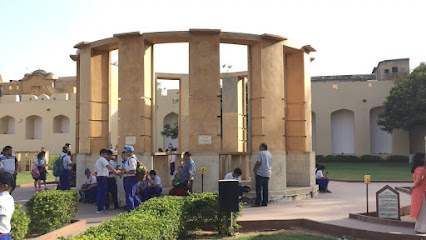
City Palace Jantar Mantar Entry Gate
Discover the historic allure of the City Palace Jantar Mantar Entry Gate, where astronomy meets architectural splendor in Jaipur's vibrant heart.
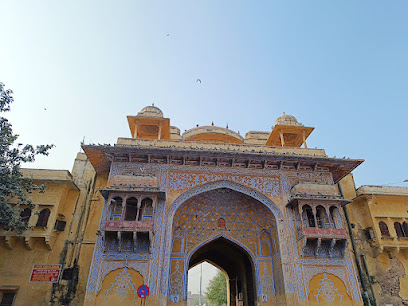
Jai Prakash Yantra Jantarmantar observatory
Unveil the secrets of the universe at Jai Prakash Yantra Jantarmantar Observatory, a UNESCO World Heritage Site in Jaipur, Rajasthan.
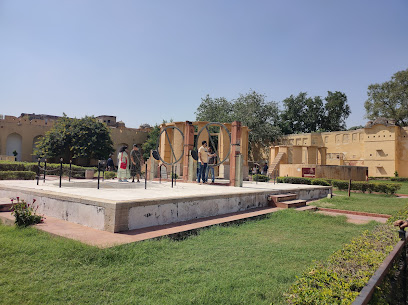
Yantra Raj
Explore the universe at Yantra Raj Observatory in Jaipur, where astronomy comes alive through interactive exhibits and knowledgeable guides.
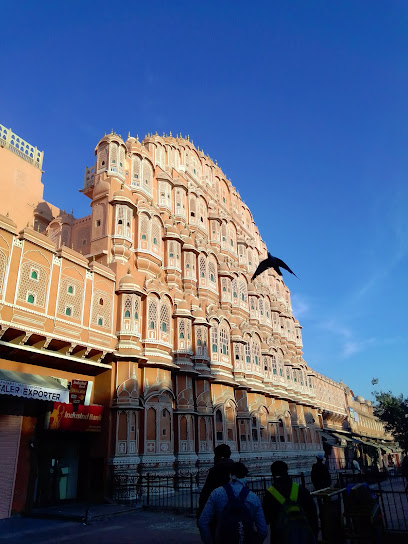
Unnatamsa Yantra
Explore Unnatamsa Yantra, an astronomical observatory in Jaipur, revealing the brilliance of ancient Indian science and celestial observation.
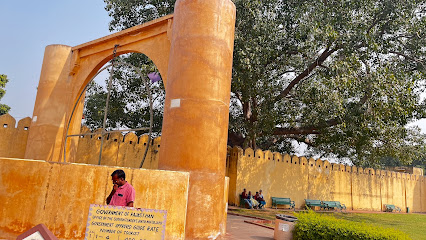
Jantar Mantar
Discover the celestial wonders of Jantar Mantar in Jaipur, an astronomical observatory that showcases India's rich scientific heritage.
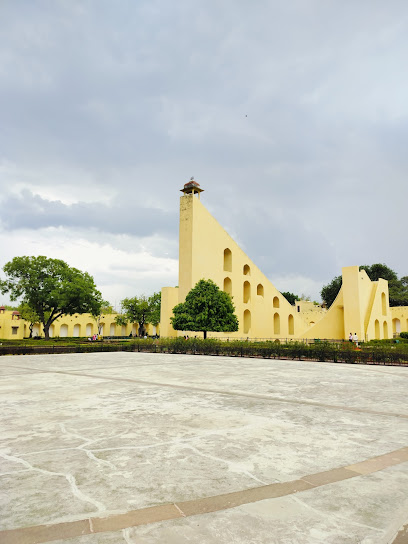
Unmissable attractions to see
Jai Niwas Garden
Discover the tranquility of Jai Niwas Garden, a lush oasis in Jaipur perfect for relaxation, picnics, and stunning photography.
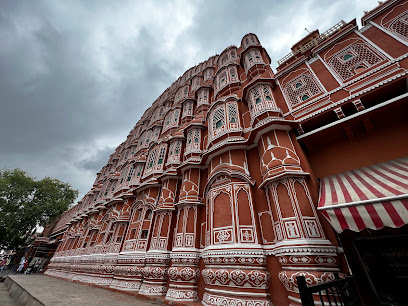
Isarlat Sargasooli
Explore the majestic Isarlat Sargasooli in Jaipur, a stunning monument steeped in history and architectural beauty, perfect for cultural immersion.
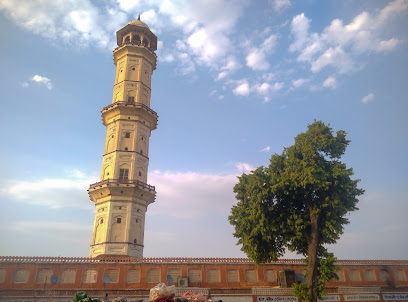
Tripolia Gate
Discover the stunning Tripolia Gate, a historical landmark in Jaipur, and immerse yourself in the vibrant culture and heritage of the Pink City.
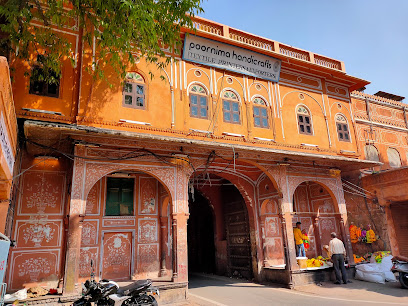
Maharaja Sawai Man Singh II Museum
Explore the regal heritage of Jaipur at the Maharaja Sawai Man Singh II Museum, showcasing royal artifacts and rich history in a stunning palace setting.
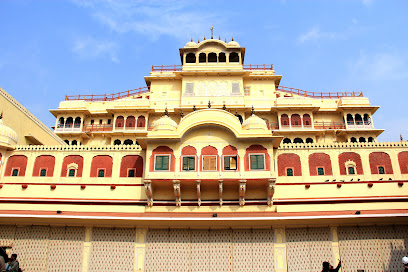
Elephant with Jaipur | Elephant's Best Sanctuary in Jaipur (Contact By Whatsapp)
Experience unforgettable encounters with elephants at Elephant with Jaipur, a sanctuary dedicated to their care and conservation in Rajasthan.
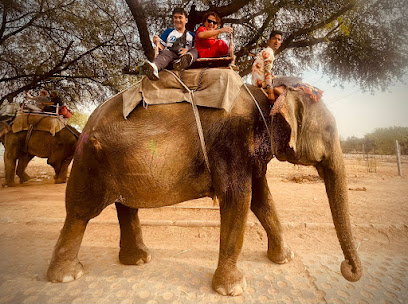
City Palace Jantar Mantar Entry Gate
Explore the City Palace Jantar Mantar Entry Gate, a UNESCO World Heritage Site showcasing India's rich astronomical heritage in the heart of Jaipur.
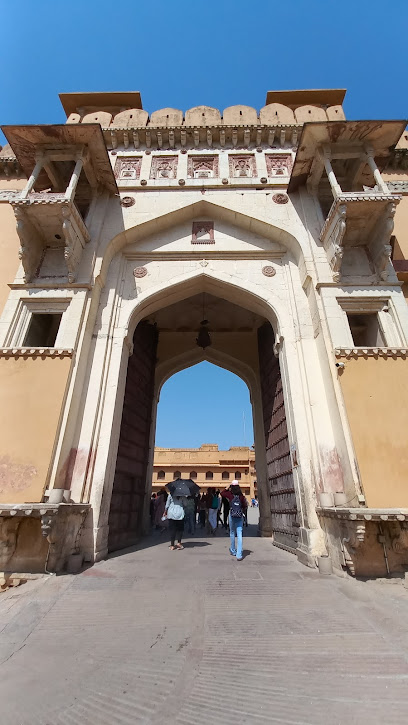
Jai Prakash Yantra Jantarmantar observatory
Discover the celestial wonders of Jai Prakash Yantra at the Jantar Mantar Observatory in Jaipur, where history and astronomy unite.
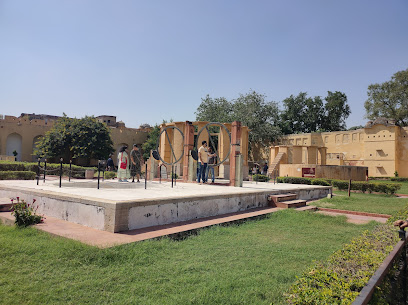
Essential places to dine
Govindam Retreat
Experience authentic Rajasthani flavors at Govindam Retreat - Jaipur's premier vegetarian dining destination offering exquisite Indian cuisine.
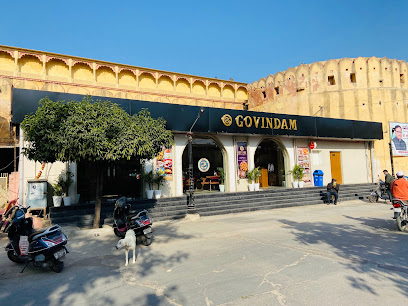
Samrat Restaurant
Discover affordable fast food at Samrat Restaurant in Jaipur, where traditional Indian flavors meet modern dining in a vibrant setting.

The Tattoo Cafe & Lounge
Discover the culinary delights at The Tattoo Cafe & Lounge in Jaipur – where local flavors meet international flair.
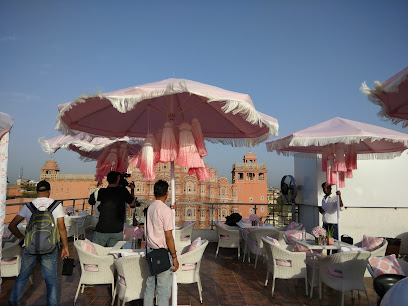
Kailash Veg Restaurant
Experience authentic Rajasthani and Punjabi vegetarian cuisine in the heart of Jaipur's Pink City at Kailash Veg Restaurant.
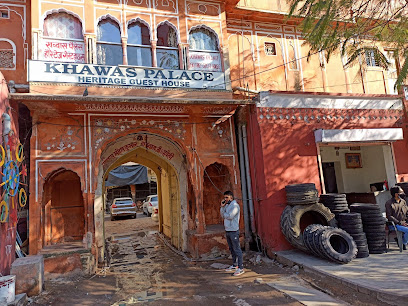
Heritage Buffet Restaurant - Veg Multicuisine Restaurant in Jaipur
Discover the rich flavors of Rajasthan at Heritage Buffet Restaurant – Jaipur's premier destination for authentic vegetarian cuisine.
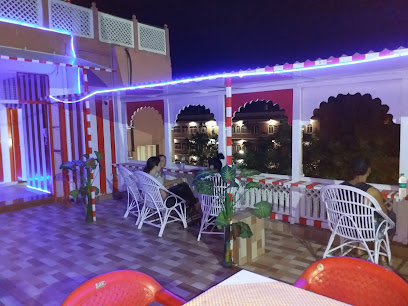
Baradari Restaurant & Bar
Discover culinary excellence at Baradari Restaurant & Bar in Jaipur - where exquisite grill dishes meet royal heritage.
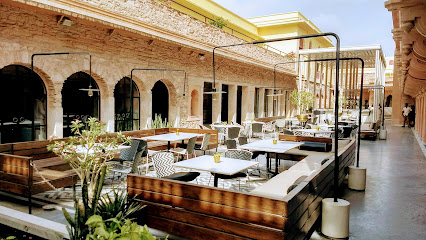
Shri Balaji Veg Restaurant
Explore authentic Rajasthani vegetarian cuisine at Shri Balaji Veg Restaurant in Jaipur - a must-visit dining experience for food lovers.
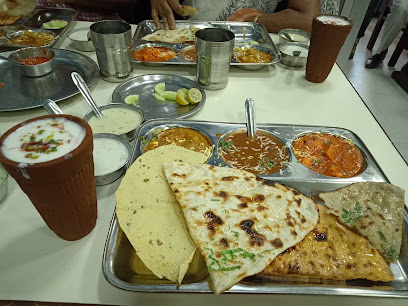
Midtown Multicuisine Restaurant & bar
Experience the rich flavors of Rajasthan at Midtown Multicuisine Restaurant & Bar, where tradition meets modernity in every bite.
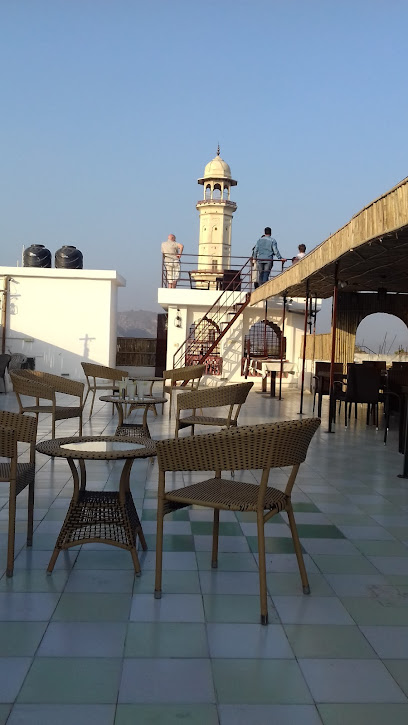
Basil and Olives
Discover the flavors of India and Italy at Basil and Olives in Jaipur - where culinary traditions blend in perfect harmony.
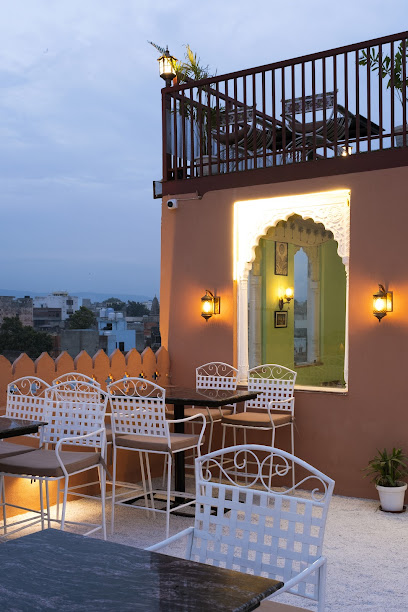
The Palace Cafe Restaurant
Experience traditional Rajasthani flavors amidst the grandeur of Jaipur's City Palace at The Palace Cafe Restaurant.
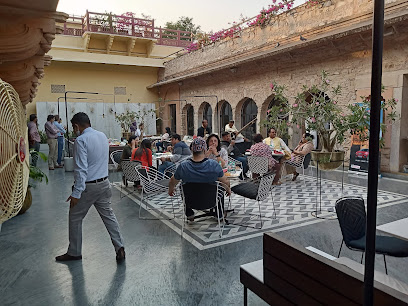
Markets, malls and hidden boutiques
Pachouli Jaipur
Discover unique home goods and stylish clothing in Pachouli Jaipur, a vibrant shopping destination in the heart of Rajasthan's colorful Tripolia Bazar.

The Wool Emporium
Discover the vibrant textile and cosmetic treasures at The Wool Emporium, a unique shopping destination in the heart of Jaipur, Rajasthan.
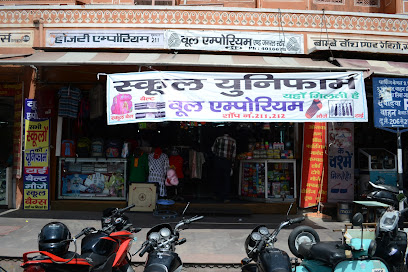
Ellora Arts
Explore the exquisite artistry of Ellora Arts in Jaipur, where traditional craftsmanship meets modern elegance in jewelry and handicrafts.
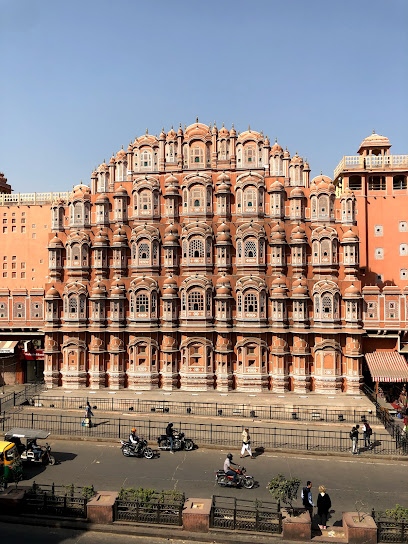
The Chelon Shop
Explore the vibrant craftsmanship of Rajasthan at The Chelon Shop in Jaipur, your destination for authentic local souvenirs and artisan treasures.
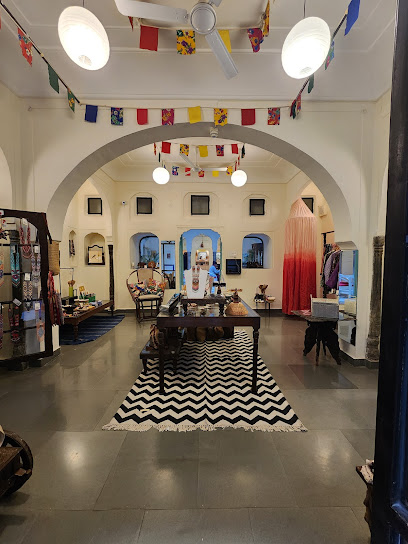
Rajasthan Fabrics and Arts
Explore Rajasthan Fabrics and Arts for exquisite textiles, unique antiques, and a glimpse into the rich cultural heritage of Jaipur.
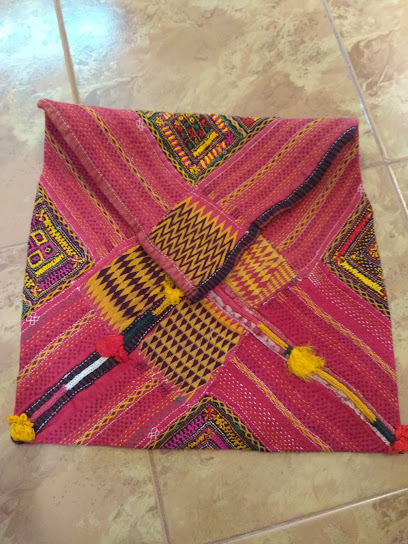
Dr Aroma
Explore Dr Aroma, Jaipur's premier perfume store, where captivating fragrances and traditional artistry blend to create an unforgettable shopping experience.
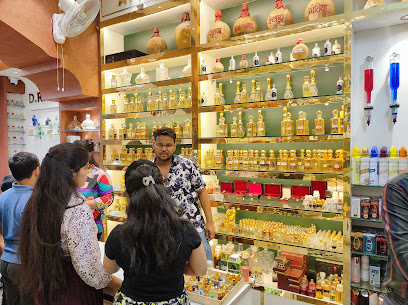
Umeed International
Discover authentic Rajasthani fashion at Umeed International, located within the iconic City Palace of Jaipur, offering a unique blend of tradition and style.
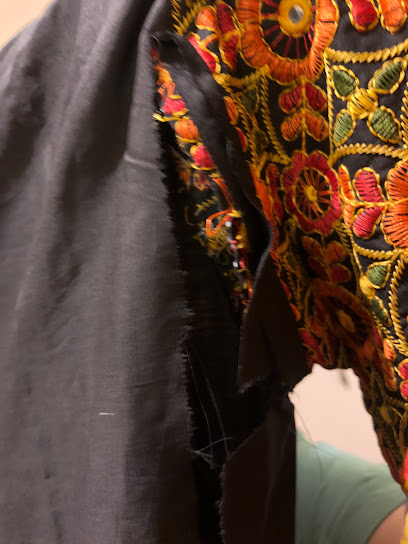
Raghunandan (khatuwale)
Experience the vibrant colors of Rajasthan at Raghunandan, where traditional attire meets modern style in the heart of Jaipur.

Pink City Handicraft
Explore Pink City Handicraft in Jaipur, where vibrant textiles and unique craftsmanship embody the rich heritage of Rajasthan's clothing traditions.

Rajasthani Hénault design
Discover the unique blend of tradition and beauty at Rajasthani Hénault design shop in Jaipur, where culture meets craftsmanship.
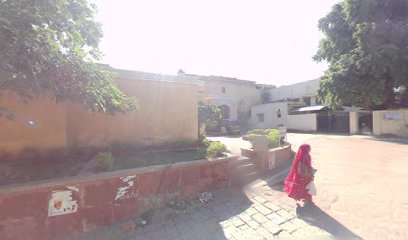
Essential bars & hidden hideouts
Blackout club in Jaipur
Discover the electrifying nightlife at Blackout Club in Jaipur, where vibrant ambiance meets exquisite cuisine and drinks.
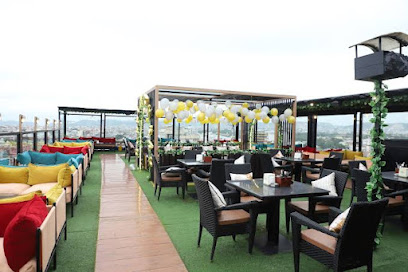
The Night Jar Reloaded
Discover a vibrant nightlife at The Night Jar Reloaded, Jaipur's premier lounge offering exquisite dining and an extensive drink menu.
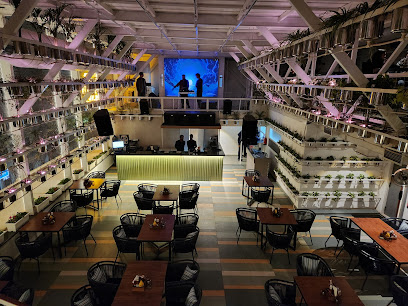
360° - Best cocktail bar & lounge| Panoramic Rooftop
Discover Jaipur's vibrant nightlife at 360°, an upscale rooftop bar offering panoramic views, signature cocktails, and a lively atmosphere.
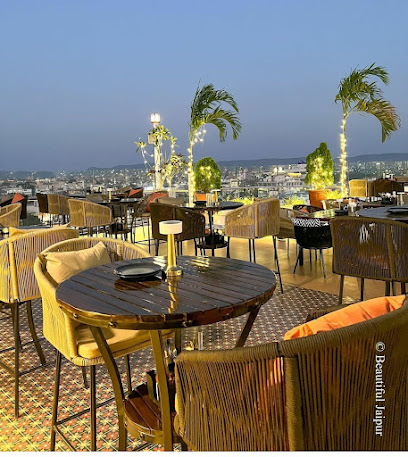
Baradari Restaurant & Bar
Experience the royal flavors of Rajasthan at Baradari Restaurant & Bar, where tradition meets modern culinary artistry in the heart of Jaipur.
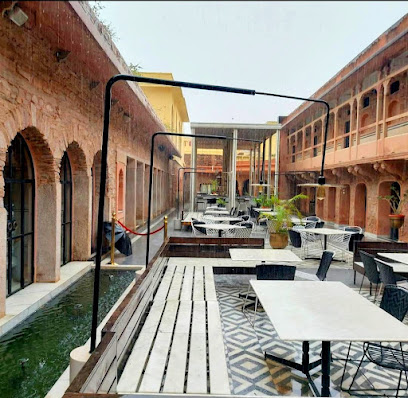
DND Bar and Lounge
Discover the vibrant atmosphere of DND Bar and Lounge in Jaipur, where exquisite drinks and lively entertainment await for an unforgettable night.
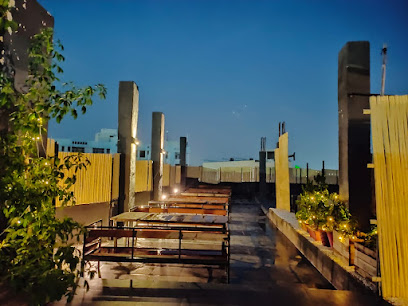
Henry's The Pub - Hotel Park Prime
Savor the flavors of Jaipur at Henry's The Pub - a vibrant grill experience amidst the city's charm.
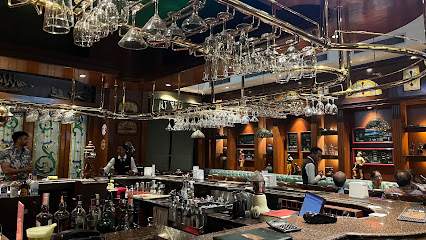
Hotel Sweet Dream Bar
Unwind at Hotel Sweet Dream Bar, a vibrant spot in Jaipur offering a delightful selection of drinks and a cozy atmosphere for all visitors.

Distil Bar
Discover Distil Bar in Jaipur, a chic retreat for cocktails and relaxation, nestled within Lords Plaza, perfect for unwinding after a day of exploration.
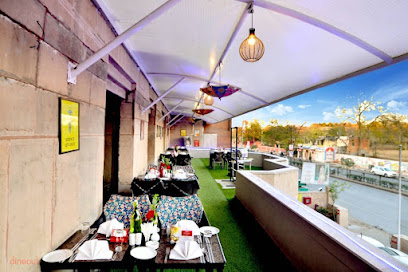
The Esko Bar
Experience the vibrant fusion of Rajasthani culture and retro vibes at The Esko Bar in Jaipur, where every sip tells a story.

JMP Bar
Discover the vibrant nightlife of Jaipur at JMP Bar, where refreshing drinks and a lively atmosphere await you in the heart of the city.
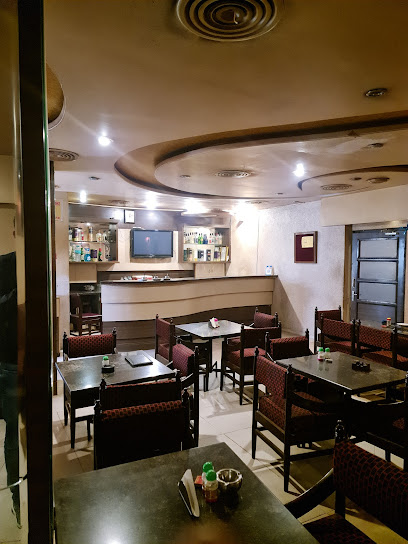
Local Phrases
-
- Helloनमस्ते
[namaste] - Goodbyeअलविदा
[alvida] - Yesहां
[haan] - Noनहीं
[nahin] - Please/You're welcomeकृपया/स्वागत है
[krupaya/swagat hai] - Thank youधन्यवाद
[dhanyavad] - Excuse me/Sorryक्षमा करें/माफ़ कीजिए
[ksama karein/maaf kijiye] - How are you?आप कैसे हैं?
[aap kaise hain?] - Fine. And you?ठीक हूँ। आप?
[thik hoon. aap?] - Do you speak English?क्या आप अंग्रेज़ी बोलते हैं?
[kya aap angrezi bolte hain?] - I don't understandमैं समझ नहीं पा रहा हूँ
[main samajh nahi pa raha hoon]
- Helloनमस्ते
-
- I'd like to see the menu, pleaseकृपया मेनू दिखाइए
[krupaya menu dikhaiye] - I don't eat meatमैं मांस नहीं खाता हूँ
[main maans nahi khaata hoon] - Cheers!चियर्स!
[cheers!] - I would like to pay, pleaseकृपया मैं भुगतान करना चाहूँ
[krupaya main bhugtaan karna chaahoon]
- I'd like to see the menu, pleaseकृपया मेनू दिखाइए
-
- Help!बचाओ!
[bachao!] - Go away!चले जाओ!
[chale jao!] - Call the Police!पुलिस को बुलाओ!
[police ko bulaao!] - Call a doctor!डॉक्टर को बुलाओ!
[doctor ko bulaao!] - I'm lostमैं खो गया/गई हूँ
[main kho gaya/gayi hoon] - I'm illमुझे बीमारी है
[mujhe bimari hai]
- Help!बचाओ!
-
- I'd like to buy...मैं खरीदना चाहूँगा/चाहूँगी...
[main khareedna chaahunga/chaahoongi...] - I'm just lookingमैं सिर्फ देख रहा/रही हूँ
[main sirf dekh raha/rahi hoon] - How much is it?यह कितने का है?
[yah kitne ka hai?] - That's too expensiveयह बहुत महंगा है
[yah bahut mahanga hai] - Can you lower the price?क्या आप कीमत कम कर सकते हैं?
[kya aap keemat kam kar sakte hain?]
- I'd like to buy...मैं खरीदना चाहूँगा/चाहूँगी...
-
- What time is it?समय क्या है?
[samay kya hai?] - It's one o'clockएक बजे हैं
[ek baje hain] - Half past (10)दस बजे के बाद आधा
[das baje ke baad aadha] - Morningसुबह
[subah] - Afternoonदोपहर
[dopahar] - Eveningशाम
[shaam] - Yesterdayकल
[kal] - Todayआज
[aaj] - Tomorrowकल
[kal] - 1एक
[ek] - 2दो
[do] - 3तीन
[teen] - 4चार
[chaar] - 5पांच
[paanch] - 6छह
[chhe] - 7सात
[saat] - 8आठ
[aath] - 9नौ
[nau] - 10दस
[das]
- What time is it?समय क्या है?
-
- Where's a/the...?...कहाँ है?
[...kahan hai?] - What's the address?पता क्या है?
[pata kya hai?] - Can you show me (on the map)?क्या आप मुझे दिखा सकते हैं (नक्शे पर)?
[kya aap mujhe dikhа sakte hain (nakshе par)?] - When's the next (bus)?अगली (बस) कब है?
[agli (bas) kab hai?] - A ticket (to ....)एक टिकट (... के लिए)
[ek ticket (... ke liye)]
- Where's a/the...?...कहाँ है?
History of Jantar Mantar
-
Constructed between 1720 and 1734 by Maharaja Sawai Jai Singh II, Jantar Mantar in Jaipur is one of five astronomical observatories he built across India. This particular site features 19 architectural astronomical instruments, designed to observe celestial bodies and track time accurately. The observatory reflects the Maharaja's deep interest in astronomy and his desire to advance scientific knowledge in India.
-
In 2010, Jantar Mantar was designated a UNESCO World Heritage Site, recognizing its significance as a monumental testimony to the scientific achievements of Indian civilization. This status not only highlights its architectural brilliance but also emphasizes the cultural importance of astronomical studies in India’s history.
-
The various instruments at Jantar Mantar, such as the Samrat Yantra (the largest sundial) and the Jai Prakash Yantra (a hemispherical sundial), demonstrate the advanced understanding of astronomy during the 18th century. Each instrument serves a specific purpose, from measuring time to predicting eclipses, showcasing the innovative spirit of the era.
-
Jantar Mantar represents a blending of science and art, reflecting the cultural and intellectual pursuits of the Rajput rulers. The observatory not only served as a tool for astronomical observations but also became a center for scholarly discussions and education, influencing future generations of astronomers and mathematicians in India.
-
In recent years, efforts have been made to preserve and restore the intricate structures and instruments of Jantar Mantar. These initiatives aim to maintain the integrity of this historical site while promoting awareness of its astronomical significance and cultural heritage within Jaipur and beyond.
Jantar Mantar Essentials
-
Jantar Mantar is centrally located in Jaipur, making it accessible from various neighborhoods. From the Pink City area, it is about a 15-minute walk. For those coming from farther neighborhoods like Bapu Nagar or C-Scheme, local taxis and auto-rickshaws are readily available. Public buses also connect to the area, with routes serving major landmarks and residential areas.
-
Jantar Mantar is best explored on foot due to its compact size. The surrounding area is pedestrian-friendly, and you can easily navigate to nearby attractions like the City Palace and Hawa Mahal. For longer distances, local taxis and auto-rickshaws are convenient options. Bicycles can be rented from various shops in Jaipur, providing a unique way to see the city.
-
Jantar Mantar is generally safe for tourists; however, it's advisable to remain vigilant, especially in crowded areas. Avoid walking alone late at night and keep an eye on personal belongings. While crime rates are low, petty theft can occur in busy markets nearby, so it’s best to stay cautious. Areas around the bus station may be less secure during late hours.
-
In case of an emergency, dial 100 for police assistance or 108 for ambulance services. The nearest hospitals are located within a short distance in the city center, such as the Sawai Man Singh Hospital. Carry travel insurance that covers emergencies, and keep emergency contact numbers handy. Local pharmacies are available for minor health issues.
-
Fashion: Do dress modestly; avoid revealing clothing, especially in sacred areas. Religion: Do respect local customs and traditions; be quiet and respectful in religious spaces. Public Transport: Do offer your seat to elderly passengers; don't eat or drink on public transport. Greetings: Do greet locals with a respectful nod or handshake; don't be overly familiar with strangers. Eating & Drinking: Do try local Rajasthani dishes; don't refuse food offerings, as it may offend your host.
-
To experience Jantar Mantar like a local, visit in the early morning or late afternoon to avoid crowds and enjoy the cooler temperatures. Engage with local guides who can provide deep insights into the astronomical instruments and their significance. Visit nearby markets to sample street food and shop for handicrafts. Participate in local festivals if your visit coincides with any, as they offer a rich cultural experience.
Nearby Cities to Jantar Mantar
-
Things To Do in Ranthambore
-
Things To Do in Pushkar
-
Things To Do in Agra
-
Things To Do in Delhi
-
Things To Do in Gwalior
-
Things To Do in Jodhpur
-
Things To Do in Udaipur
-
Things To Do in Rishikesh
-
Things To Do in Bhopal
-
Things To Do in Kanpur
-
Things To Do in Shimla
-
Things To Do in Jaisalmer
-
Things To Do in Lucknow
-
Things To Do in Lahore
-
Things To Do in Amritsar

